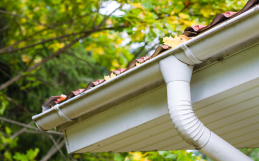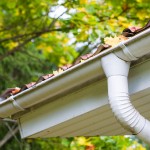Soffit Vent vs Roof Vent
Understanding How Airflow Protects Your Home and Your Roofing System
Many homeowners rarely think about roof ventilation until they notice a problem. A musty smell in the attic, peeling shingles, or rooms that just won’t stay cool in summer. But the truth is, a properly ventilated roof can make all the difference in how comfortable, efficient, and long-lasting your home is. Let’s take a look at the best roof ventilation methods.
Roof ventilation is the system that allows warm, moist air to escape from your attic while drawing in fresh air to replace it. Two of the most important parts of this process are soffit vents and roof vents. You might be wondering which one you need or whether one is better than the other.
The answer: they work best together. Let’s take a closer look at how each type of vent works, why they matter, and what happens when your attic doesn’t have enough airflow.
What Is Roof Ventilation and Why Does It Matter?
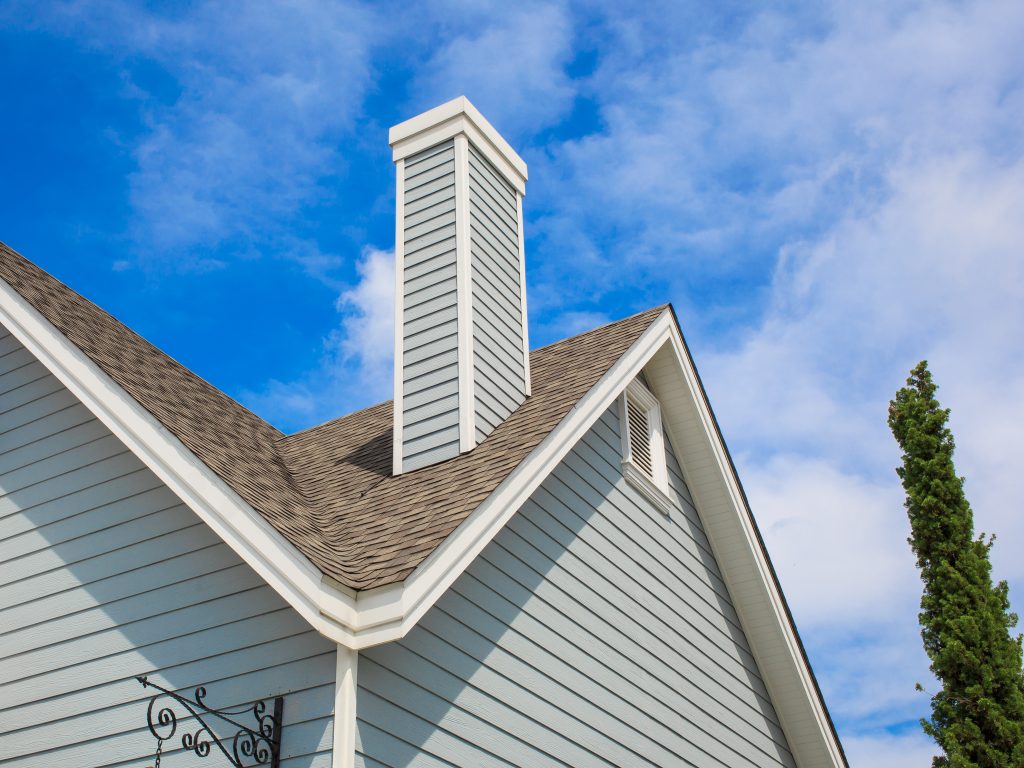 A roof ventilation system is designed to move air through your attic space by pulling in cooler air from the outside and letting warm, moist air escape. Think of it as your home’s breathing system. Fresh air comes in through intake vents (usually located in the soffits or eaves) and leaves through exhaust vents (typically near the top of the roof).
A roof ventilation system is designed to move air through your attic space by pulling in cooler air from the outside and letting warm, moist air escape. Think of it as your home’s breathing system. Fresh air comes in through intake vents (usually located in the soffits or eaves) and leaves through exhaust vents (typically near the top of the roof).
When ventilation works properly, it keeps your attic close to the same temperature as the outdoors. That balance prevents condensation and heat buildup, which can otherwise lead to mold, warped decking, and higher energy bills. Without proper roof ventilation, heat and humidity get trapped under the roof, shortening the life of your roofing material and making your home less energy efficient.
What Are Soffit Vents and How Do They Work?
If you’re not familiar with the term, the soffit is the underside of your roof’s overhang, the area that connects the edge of your roof to your exterior walls. Soffit vents (sometimes called vented soffits) are small openings installed in this area that let outside air enter the attic.
These vents act as the intake portion of your attic ventilation system. As cool air enters through the soffit, it pushes warmer air upward and out through the roof vents. That steady airflow keeps your attic space dry and evenly tempered throughout the year.
Without soffit vents, air from the attic has nowhere to go, and moisture can build up inside insulation or rafters. Over time, that warm, moist air can cause mold growth and wood rot. Both expensive problems start quietly and spread quickly.
What Are Roof Vents and Why Are They Important?
While soffit vents let cool air in, roof vents allow hot air to escape. They serve as the exhaust in a balanced roof ventilation system. When air flows naturally from the soffit to the roof vent, it creates a constant exchange that prevents stagnant air and keeps your roofing system healthy.
There are several types of roof vents, each designed for different home and roof layouts:
- Ridge vents: Installed along the peak of the roof to provide continuous, even airflow.
- Box vents (or static vents): Individual vents placed near the ridge to allow heat to escape from specific areas.
- Gable vents: Placed in the upper walls of gable ends; often used on older homes to assist airflow.
- Power vents: Electrically or solar-powered fans that actively pull hot air out of the attic, ideal for large spaces or complex rooflines.
No matter the type of exhaust vent, all roof vents serve one purpose: letting warm air from the attic escape so your home stays cooler and your roof lasts longer.
Soffit Vent vs Roof Vent: Which Is Better?
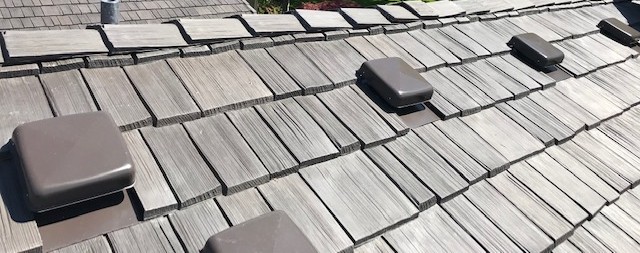 This is one of the most common homeowner questions, and the answer might surprise you: neither is better on its own. The key to proper roof ventilation is balance. You need both intake and exhaust vents for air to circulate efficiently.
This is one of the most common homeowner questions, and the answer might surprise you: neither is better on its own. The key to proper roof ventilation is balance. You need both intake and exhaust vents for air to circulate efficiently.
Soffit vents draw in cool, fresh air while roof vents release the hot air rising inside your attic. If one side of that system is missing or undersized, airflow stalls. That can cause condensation in winter and excessive heat in summer, both of which can damage your roof and your home’s structure.
Think of your attic like a chimney that needs both an opening at the bottom and one at the top. Without that balance, air can’t move freely. A properly ventilated roof creates a natural flow that extends the life of your shingles, protects insulation, and keeps your home comfortable year-round.
What Type of Roof Ventilation System Is Best for Your Home?
The best attic ventilation system depends on your roof’s shape, size, and local climate. In the Pacific Northwest, where moisture is a constant challenge, the goal is to keep air moving to prevent mold and condensation while maintaining energy efficiency.
Here are a few popular types of intake vents homeowners often use:
- Ridge vents with soffit vents: The most effective setup for continuous airflow. Cool air enters through vented soffits and exits through the ridge vent at the roof peak.
- Box vents with soffit vents: Ideal for smaller or segmented roof designs that don’t allow a continuous ridge vent.
- Power vents or solar-powered vents: Useful for large attics where natural airflow isn’t enough to remove warm, moist air.
Each home is different, and a professional inspection can determine the right mix of intake and exhaust vents to keep your roofing system balanced and energy efficient.
What Happens Without Proper Roof Ventilation?
Poor attic airflow can create a chain reaction of problems inside your home. When warm, moist air gets trapped, it condenses on cold surfaces such as insulation, rafters, or the underside of your roof deck. Over time, this leads to mold growth, wood rot, and even structural damage.
In the summer, a hot attic can make your air conditioner work harder, driving up energy bills and reducing comfort throughout the house. In the winter, uneven temperatures on the roof can melt snow unevenly, creating ice dams that trap water under shingles.
Proper ventilation protects against all of these issues, helping your home stay drier, cooler, and more efficient. It also preserves your warranty, since many roofing manufacturers require adequate ventilation for coverage on materials.
Why Trust Warner Roofing with Your Roof Ventilation System?
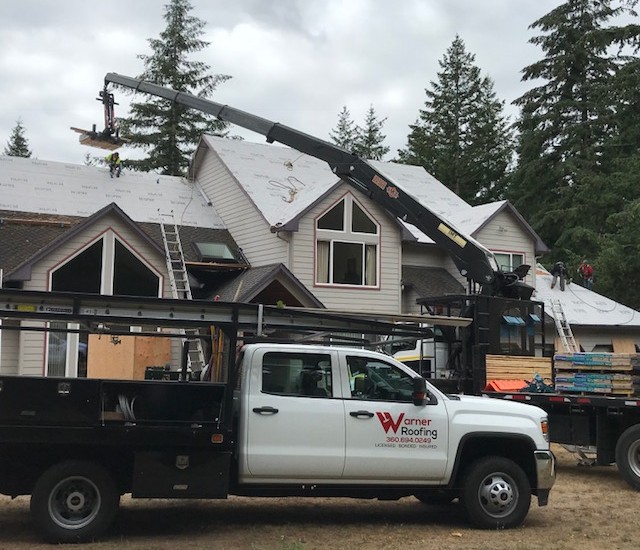 Warner Roofing & Construction has been helping homeowners across the Pacific Northwest maintain safe, efficient, and long-lasting roofing systems for decades. Our craftsmen understand how airflow affects your home’s performance and take the time to design ventilation systems that fit your roof’s unique structure.
Warner Roofing & Construction has been helping homeowners across the Pacific Northwest maintain safe, efficient, and long-lasting roofing systems for decades. Our craftsmen understand how airflow affects your home’s performance and take the time to design ventilation systems that fit your roof’s unique structure.
We’re trained and certified in the installation of major roofing brands, ensuring every vent, shingle, and seal meets manufacturer standards. Whether your roof uses ridge vents, power vents, or a combination of systems, Warner Roofing ensures the job is done right: cleanly, efficiently, and built to last.
FAQs About Best Roof Ventilation Methods: Soffit Vent vs Roof Vent
How do I know if my attic has proper ventilation?
You might notice temperature extremes between rooms, musty odors, or high energy bills. A professional inspection can check airflow balance and identify blocked or missing vents.
Can I add soffit vents to an existing roof?
Yes. In many homes, soffit vents can be added during a roof replacement or retrofit project to improve airflow without major structural changes.
Are power vents or solar-powered vents worth it?
They can be. Power vents actively move air from the attic and are ideal for larger homes or complex rooflines where natural airflow isn’t enough.
How often should roof vents be inspected?
Vents should be checked annually, especially after major storms. Debris, bird nests, or insulation can block airflow over time.
What’s the best way to prevent mold in the attic?
Maintain balanced intake and exhaust ventilation, ensure insulation doesn’t block soffit vents, and keep humidity levels low inside the home.
Keep Your Home Comfortable with Proper Roof Ventilation
Your roof does more than keep out the rain; it helps your home breathe. With the right balance of soffit and roof vents, your attic space stays dry, your home stays cooler, and your roofing materials last longer.
If you’re not sure whether your attic is properly ventilated, contact Warner Roofing & Construction for a free estimate. We’ll design a system that fits your home, protects your investment, and keeps your air flowing freely year after year.

